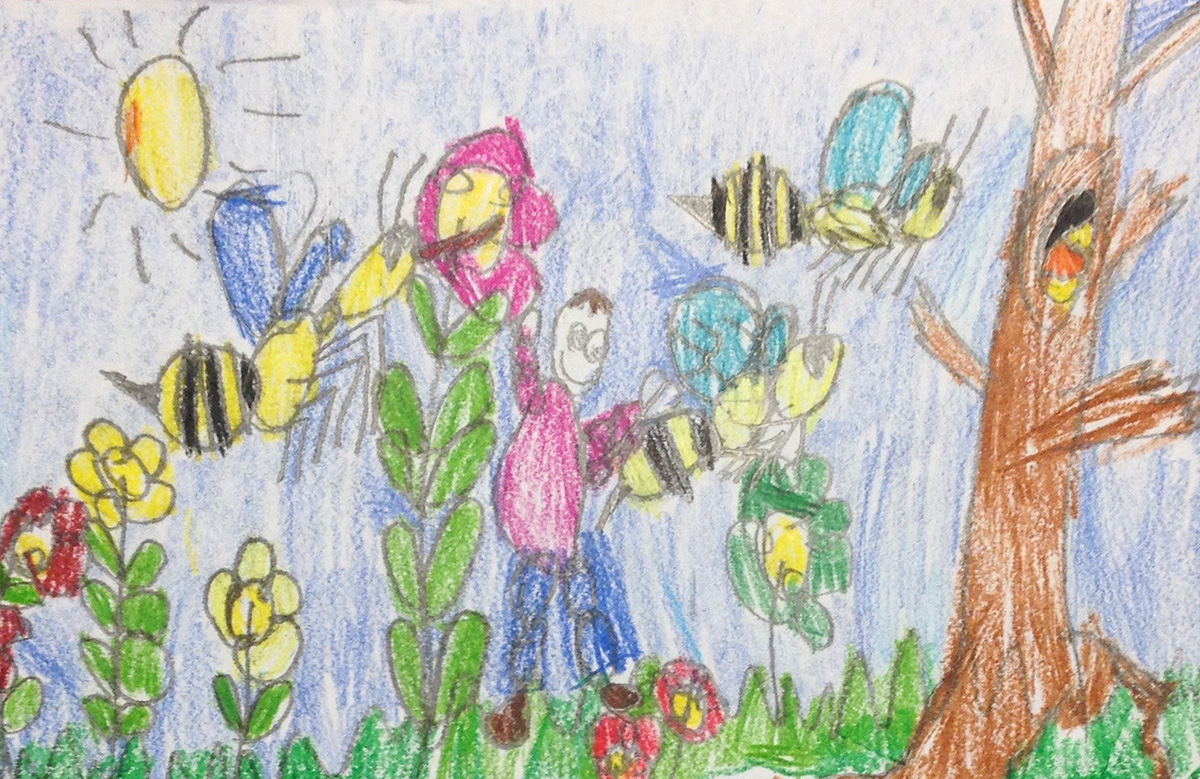Chapter 4: Why Bees? Writing Nonfiction Together In Kindergarten
Why Bees? Writing Nonfiction Together In Kindergarten

by Michelle Coneglio
Have you ever looked at a bee? I mean really looked closely at a bee? A few years ago, my Kindergarten students and I were at a local arboretum on a field trip. As I was walking among the flower gardens that had been planted around the historical home on the property, a large bee who was busy collecting nectar and pollen from the lavender and peonies nearby caught my eye. I moved in for a closer look, and I could see the pollen baskets on the hind legs of the bee so loaded with pollen she could barely fly! I was excited to see in person what we had been reading and researching about. I gathered as many students around me as possible to witness this incredible sight. As we watched the bee together, my mind buzzed with questions! Was there a literal basket? I didn’t see one. How did the pollen that was collected in the hair on the legs make it back to the basket? What WAS this basket?
As a teacher, I theoretically understood the importance of allowing children to ask their own questions and to choose topics they were passionate about; but it wasn’t until I became curious about bees myself that I truly felt the power of taking a stance that valued inquiry and curiosity. The following is the story of the impact this realization had on how my students and I read and wrote about bees during one school year. The story has evolved over five years of changing standards and district requirements and includes strategies that I tried, changed or abandoned over the course of time. I begin with the “Drawing and the Science Center” section which explains how I tried to set up a classroom environment of curiosity and wondering and how I taught drawing at the beginning of the school year. The next two sections, “Asking Questions” and “Asking, Answering, Asking….Research” take the reader through the inquiry process we used as we read nonfiction picture books, asked questions and researched about bees. In the “Power of Visual Images” section, I explain some of the thinking and decision making my students and I were engaged in as we explored and experimented with the literary genre and the disciplinary content in nonfiction picture books about bees. In the “Complex Content” section, our research is “finished” and the writing begins. I describe how my young writers decide to begin writing their bee books and what I learned from this process.